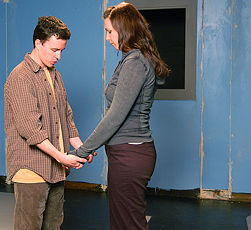The monologue is not only a speech said to someone else, or a psychological drama, nor is it a one-woman
show, but an exercise to be performed in front of the stage. The silhouette of the speaker is not unfamiliar, but plainly familiar, from the passions of the character he/she portrays. The backstage is not just one man’s shadow, but a blend of the various essential components, and of the people who have made the monologue on the stage possible.
Nowadays, people usually “struggle” to impress a group of audiences with an old, tired monologue. It is the age of creation and development. You can improvise. Come up with something new that grabs the attention of your spectators, and keeps them enthralled till the time your monologue is done. Here I’ll describe how to do it.
Usually, monologues for women have been classified into the following two kinds:
- Direct inner monologue: Direct inner monologue is a monologue in which neither of the authors are involved in the description, no assumptions are made, the audience’s awareness is displayed directly to the speaker, without the need of the speaker being an intermediary between the character she’s portraying, and the person she is. In other words, the author guides the words and his own interpretive discourse disappears or nearly disappears from the pages.
- Indirect inner monologue: Indirect interior monologue is spoken by an omniscient author with no time for unspeakable material, as if they were directly flowing from the consciousness of the characters; the author, through comments and descriptions renders monologue wizardry upon the audience.
Both kinds are good ways to go, for writing a monologue. If you are planning to go either way, monologues for women can be written excellently. Here is a short guide to prepare your monologue.
Steps to prepare your own monologue:
Now that you know what the types of monologues, you can actually begin framing ideas with the various plots your monologue can be based on. Try not to go for old and tired monologues. Devise something using the guide below. This guide will need you to take a few minutes and prepare the subject mentally. At this point you will have to apply the techniques presented. It will be useful to have a pen and a paper to organize your ideas and begin writing your own monologue.
- Prepare an outline: This theme is very important because it will shape your monologue. The “outline” must have:
- Introduction: introduce the subject
- Body: develop the theme
- Conclusions: finish off the subject
You can sketch the plan on a sheet (it is better to practice at home), or keep it in your head.
- Memorize the vocabulary you will use. Thinking about it, it might be difficult at first, but you can get better if you prepare different topics. Remember to always listen to the sound of the words.
- Learn the generic structures you will use you; have to learn to play quickly.
- Practice in the mirror, or in front of an audience
It’s always better to do things with the help of a teacher, but if you do not have that teacher, you can use the mirror, or meet other students in your class to prepare the what you will be sayng. Ask your colleagues to take note of your mistakes and their views on your monologue. When done, you should use constructively, the views of all. Suppose the monologue you are writing about is, “Ways of Staying in Touch With Friends”. Think about the following:
- How do you stay in touch with friends? Why?
- How have the ways of staying in touch with people changed over the years?
- What are the advantages or disadvantages of each of these options?
Prepare your outline using the technique you just learned. It may look something like this:
Introduction:
Who am I, what do I do, where do I live?
Body:
I like to meet my friends personally rather than on Facebook; reasons why I like to meet my friends personally.
The ways to stay in touch with people have changed because of the use of technology. In today’s world we can communicate much faster . Another advantage is that you can have contact even with friends who are very far away from where you live. One disadvantage is: we have become more impersonal and selective. One advantage of personal interaction: you can find out better how your friends are feeling. One disadvantage of personal interaction: you spend more time traveling and it’s more expensive.
Conclusion:
Nowadays, it’s much easier to stay in touch with people, but it’s also much easier not to make an effort to solve problems with your friends. Vocabulary: mood, stay in touch, gestures, feelings, on the Internet, video conference.
Now finally, speak your monologue aloud. Good luck.





